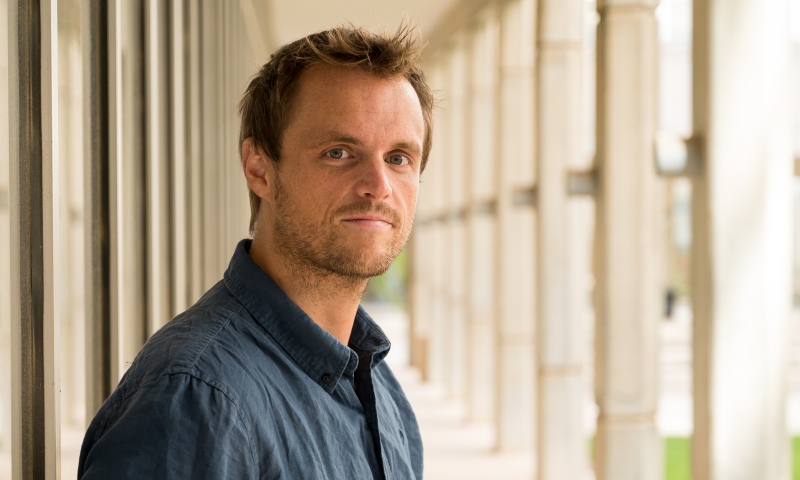If you ever stare at a scallop, you should know that it is staring back at you with more than 100 eyes. Not only that, but each eye is also a masterpiece of biological crystallization: thousands of thin square guanine crystals are tiled into a concave mirror that reflects light onto the overlying retina, enabling the scallop to see.
Ben-Gurion University of the Negev's Dr. Benjamin Palmer (pictured below) and Ph.D. student Avital Wagner took a deep dive into scallops' eyes using the latest in cryo-SEM microscopy to try and understand some of the mysteries about these crystals. In particular, they wanted to understand how scallops make plate-like guanine crystals, which express high reflective crystal faces, which are difficult to obtain in the lab.

They discovered a new, intriguing facet of guanine crystals by studying juvenile scallops' eyes undergoing development. The scallops can direct the growth to form ultra-thin crystals by using pre-assembled macromolecular sheets.
"This natural production far exceeds what chemists are capable of reproducing synthetically at the moment," explains Dr. Palmer, "but they provide intriguing strategies for controlling the properties of synthetic crystalline materials which may be used for future pigments that do not rely on harmful chemicals, but on natural processes instead."
Palmer and Wagner were able to follow the crystal formation process using a new cryo-SEM microscope recently donated to Ben-Gurion University by Nahum Guzik. The latest in technological microscopy enabled them to see the square-shaped guanine crystals, something which was impossible 50 years ago when research on the scallop's eyes began.
Another curious finding was that the process of making these crystals is strikingly similar to the formation of melanin (which is found in freckles).
Their research was published earlier this month in Nature Communications.
Their study is the first to link ultrastructure features of bio crystallization and melanin production by showing that the two processes develop quite similarly. "It is now probable that one common stem cell governs these two processes in wildly divergent animals," says Dr. Palmer of the Department of Chemistry.
Additional researchers include Alexander Upcher and Raquel Maria of the Ilse Katz Institute for Nanoscale Science and Technology at the University, Thorolf Magnesen of the University of Bergen, Einat Zelinger of the Hebrew University of Jerusalem, and Graça Raposo of the Curie Institute, CNRS.
The research was supported by an ERC Starting Grant (Grant number: 852948, “CRYSTALEYES”). Dr. Palmer is the Nahum Guzik Presidential Recruit and the recipient of the 2019 Azrieli Faculty Fellowship. Avital Wagner received an Azrieli Graduate Fellowship 2022/23.
Media Coverage:
No Camels
The Naked Scientists
JPost